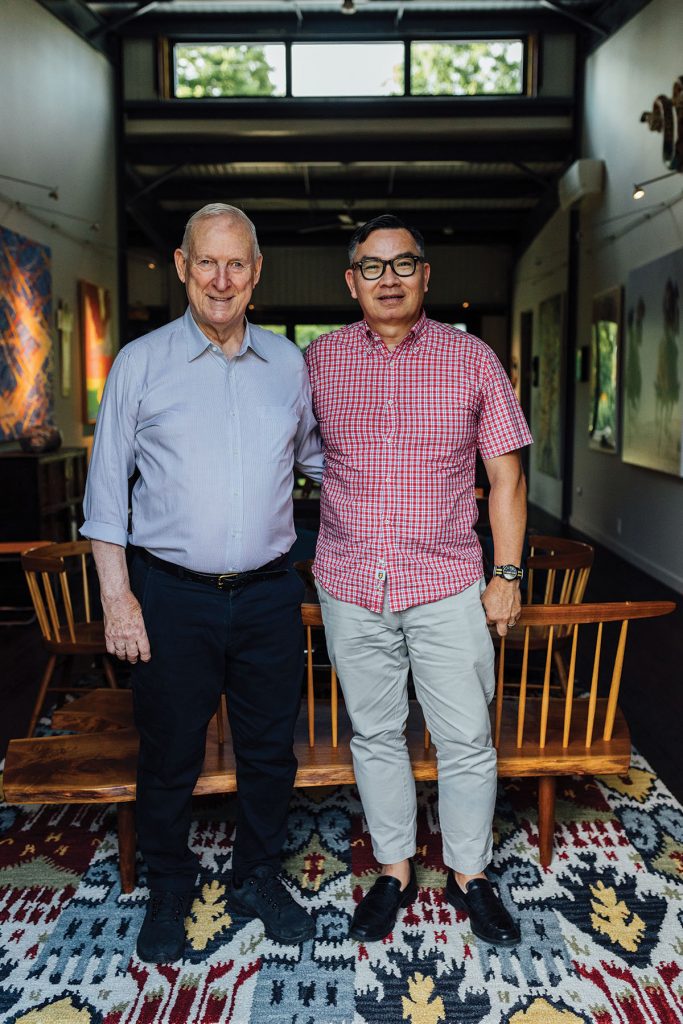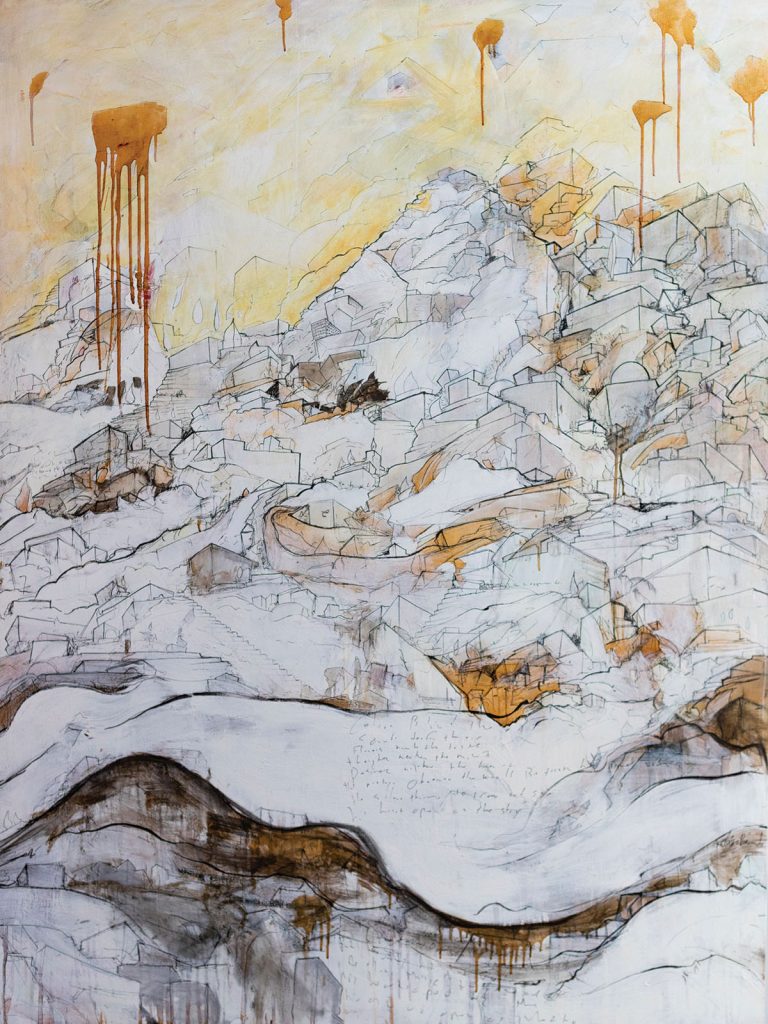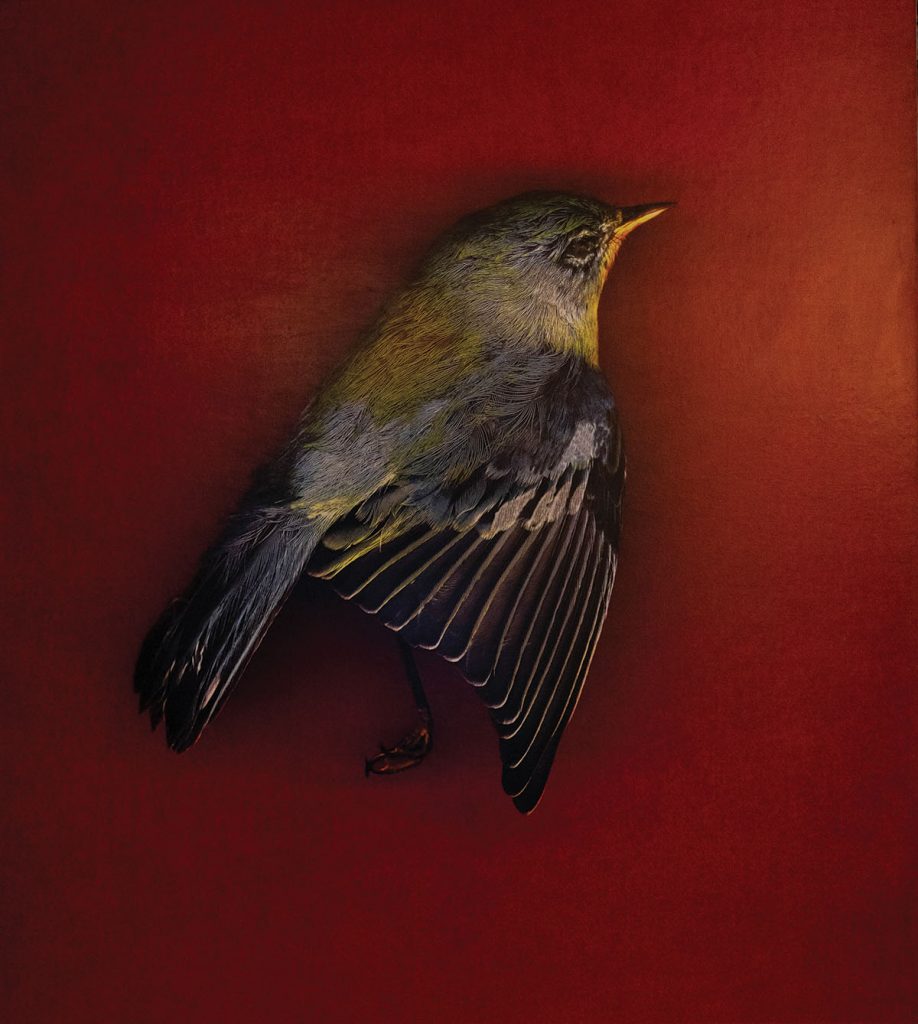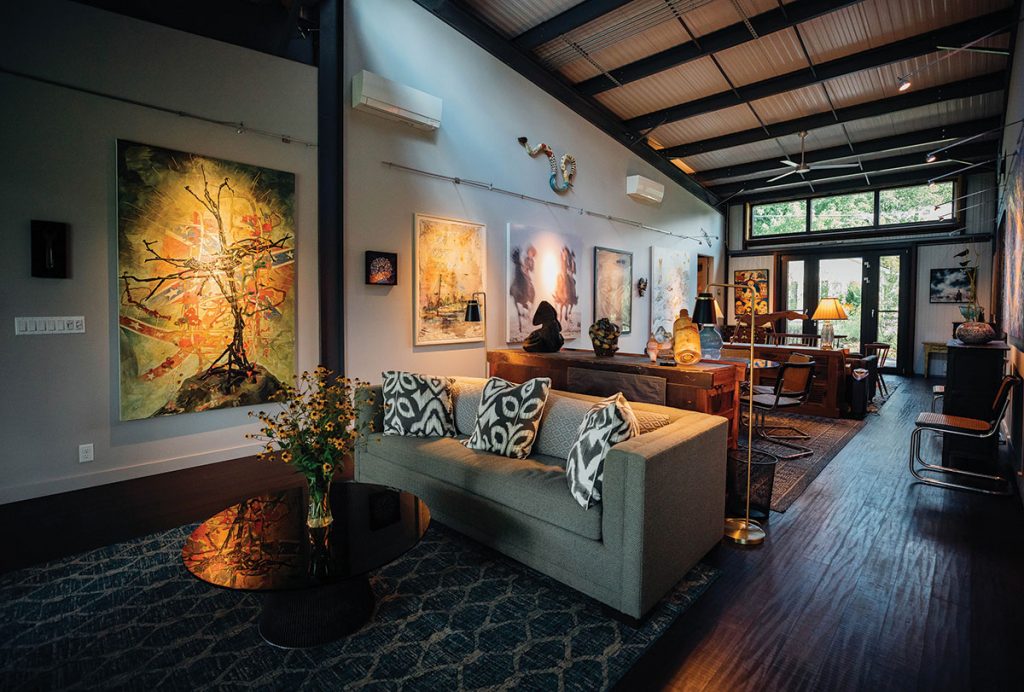
Ray Griffin, left, and Thom Robinson construct their world around art.
Photo by Rachel Pressley
Few people express their love for art so deeply as to design their home around their collection — but that’s what patron powerhouses Ray Griffin and Thom Robinson did when they built their dramatic house in Swannanoa. The couple, who had an exhibition space named after them at the Asheville Area Arts Council, focus their collection on Asheville and Western North Carolina artists, augmented by self-taught artists and national artists who favor bold color, powerful images, and clarity of line. Here they discuss their reverence for art and artists, their passion for collecting — and their efforts to get lots of art seen by lots of people.

Photo by Rachel Pressley
Did you collect independently before you met?
Thom: We did. Serendipitously, we walked around Asheville one day when we first got together and visited the [Asheville Area Arts Council] space, then located on Biltmore Avenue. That’s where we bought our first piece of art as a couple.
What do you collect?
Ray: Primarily two-dimensional works — paintings, prints, and photographs. We have about 200-250 works in the house, and we’ve given 150 works to six museums, including the Asheville Art Museum.
Thom: It’s tremendously varied. We don’t limit our collection to any one theme.
You came to “self-taught” art fairly early.
Thom: Yes, especially after we became friends with the owners of [the now-closed] Oliver’s Southern Folk Art in Hendersonville, Ann and Ted Oliver. We learned much from them, and their gallery was pivotal as we began collecting. Later we donated most of that collection to the Florence County Museum in South Carolina.
Ray: A seminal 2007 Asheville Art Museum show, Make It New, featured artists from Asheville and the immediate area. We were blown away by the depth and glory of this work. We made friends with an artist, Taiyo la Paix, who connected us with a creative, prolific group of young painters. We ended up buying many works by him and his contemporaries.

Photo by Rachel Pressley
Talk about the interplay between your collection and your home.
Ray: The central space is a gallery that’s 15 feet wide by 45 feet long. The ceiling rises at one point to 15 feet. The lighting’s special, too — little LED lights on armatures attached to the wall. We didn’t want the ceiling cluttered with light fixtures.
Thom: Art hangs in every part of the house. We currently have 18 individual works by women artists on our walls. We planned our gallery space to accommodate 10 major-sized paintings and 10 smaller works, but we’ve got pieces on tables, too. It never looks cluttered, though. We move pieces around constantly. The space was conceived for that.

Photo by Rachel Pressley
How do you acquire your pieces?
Ray: We buy from major local galleries, auctions, and other sources. The first piece we commissioned in 2007 was by Asheville artist Hoss Haley. [It’s] a drawing produced using a Dremel rotary hand tool, applied to enamel over Corten steel — a really exciting piece.
You collect so intentionally.
Thom: We do. We live with a lot of our art for a time and enjoy it immensely, but at some point many pieces go to places where more folks can see them, like museums and university settings. We recently donated pieces to Warren Wilson College, for example.

Photo by Rachel Pressley
What makes you say “Yes” to something?
Thom: It’s visceral; the art speaks to us — like when you watch a musician put everything they have into a performance for the art’s sake.
Ray: We don’t buy muddy art. Pieces must be well-rendered and have a definitive point of view, some inner depth and sparkle, including abstract ones. The colors should sing, even if they’re dark.
Ever disagree about purchasing something?
Ray: Not really. We could visit a gallery, museum event, or charity auction, and it’s uncanny because we’re so often on the same page with what speaks to us. It’s true synchronicity.
To find out current initiatives and exhibits of the Asheville Area Arts Council, see ashevillearts.com.